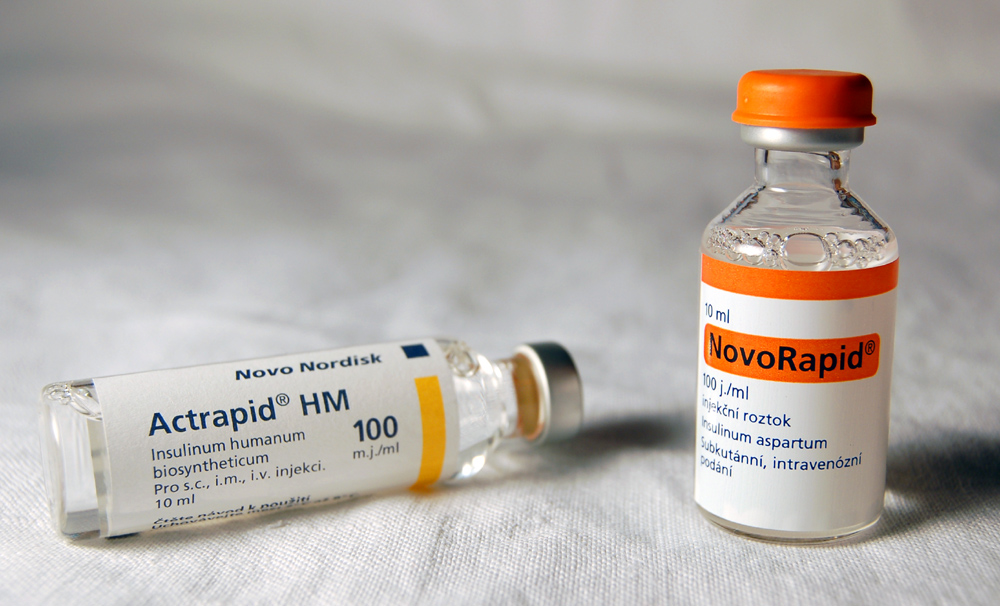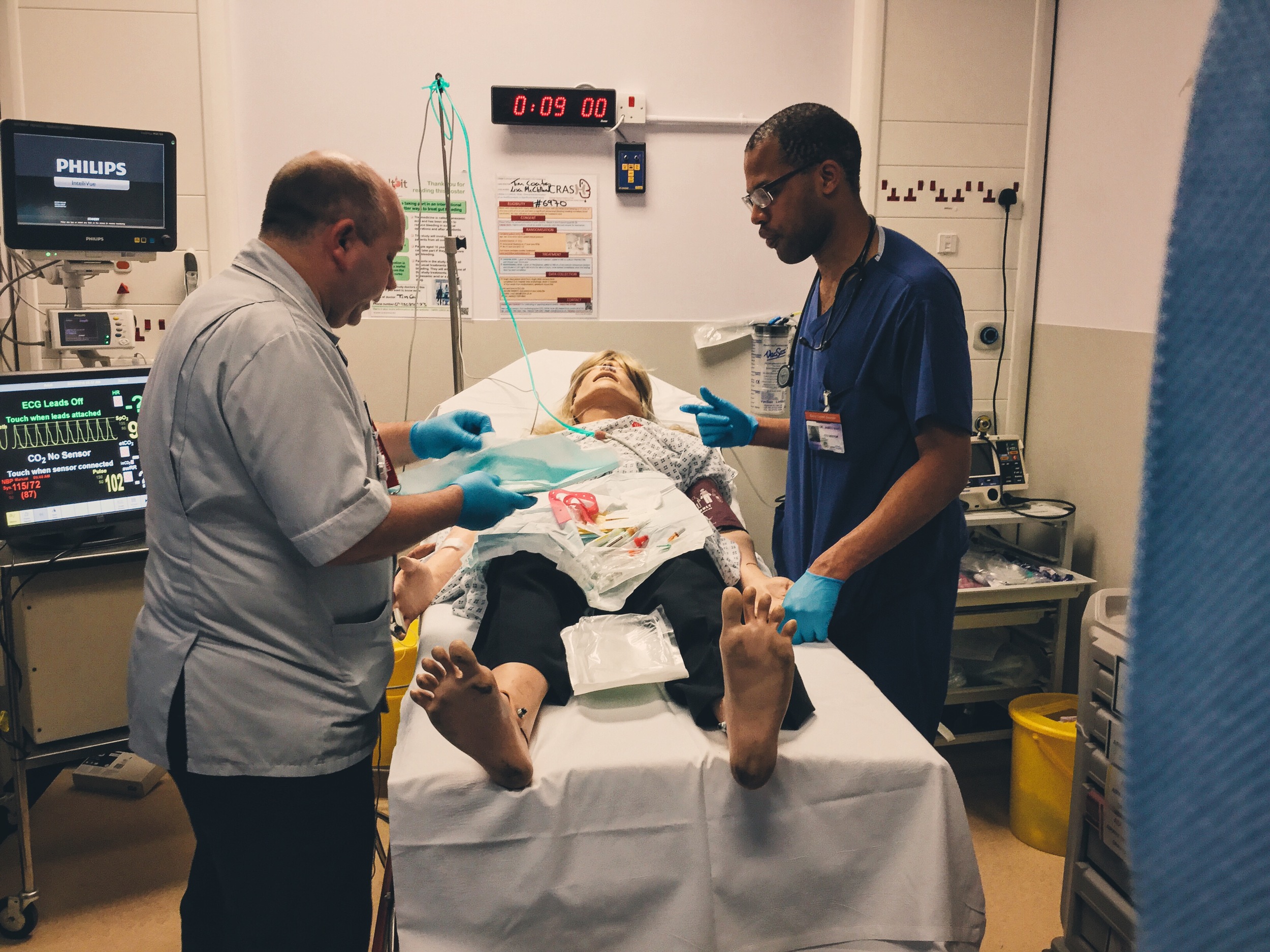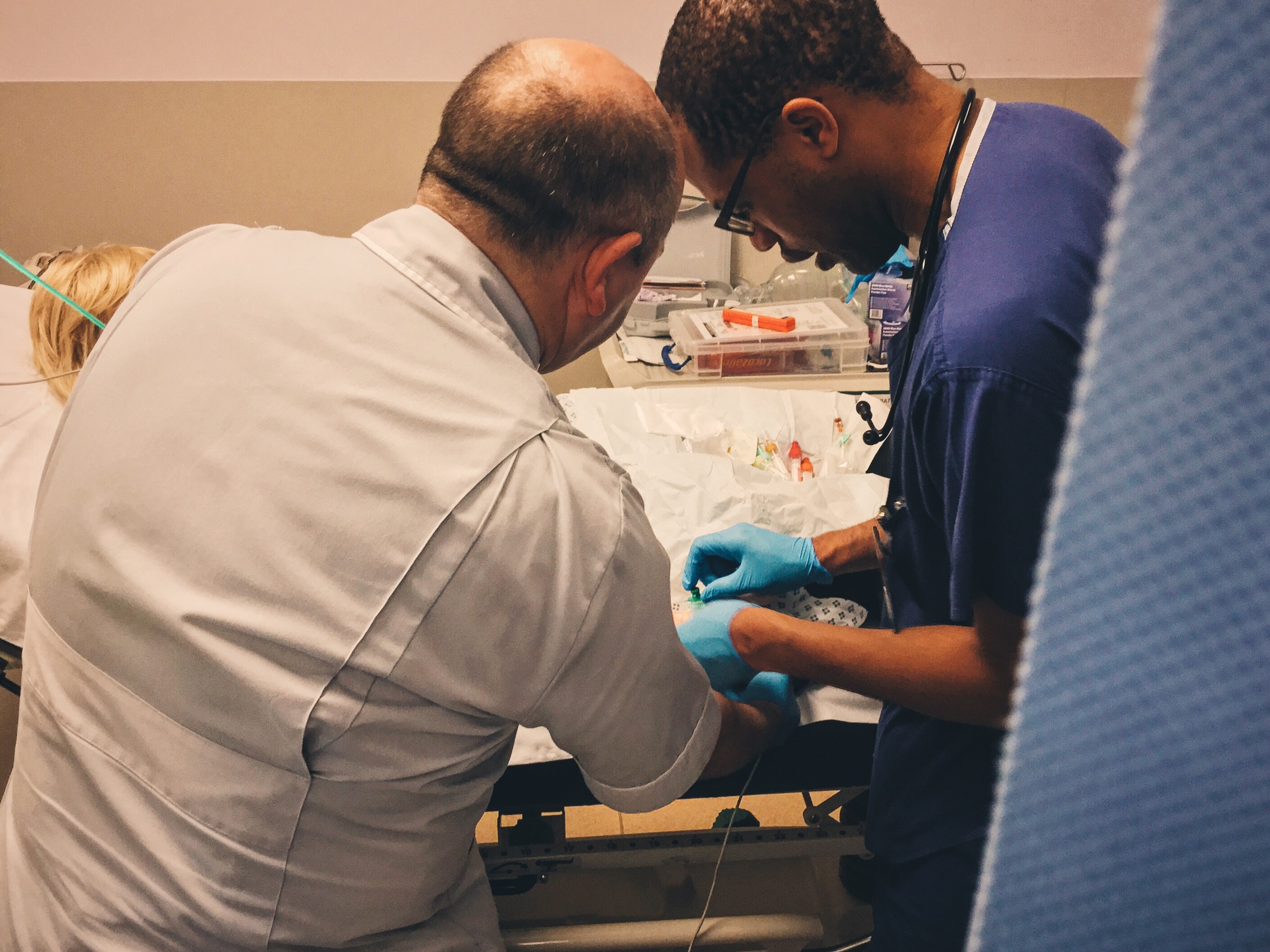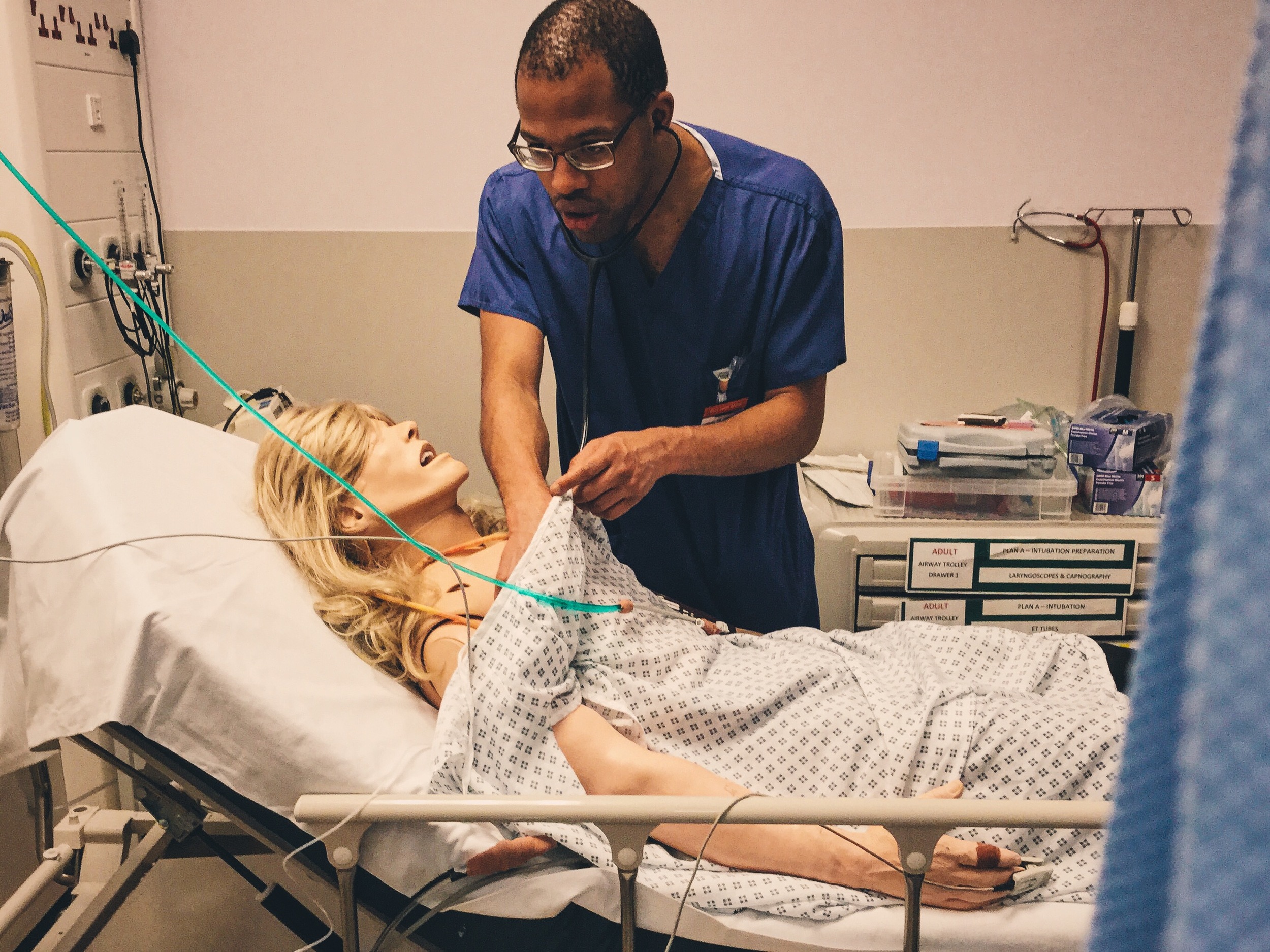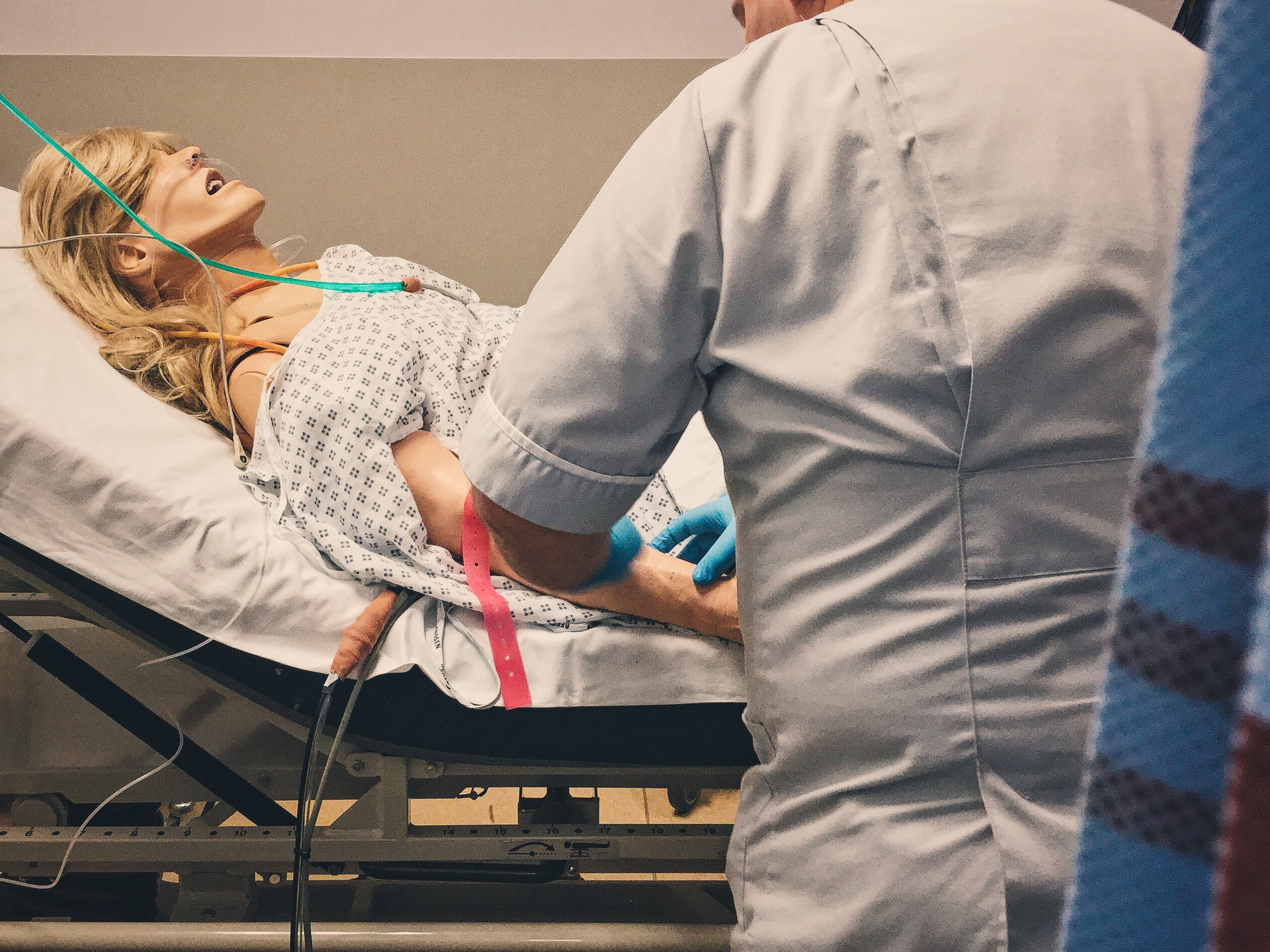#SimBlog: Hypoglycaemia
““19-year-old female. Found unresponsive on the university campus by a passerby. No evidence of trauma.””
Observations
A – Patent & self-maintaining
B – RR14, SpO2 95% in air
C – HR 96, BP 120/75
D – GCS 8/15 (E2 M4 V2)
E – Temp 35.9, BM 1.2
Clinical findings
Unresponsive
Clammy
Low BM
Why we simulated?
Hypoglycaemia often presents with non-specific symptoms including malaise, altered mental state and reduced level of consciousness. In severe cases it can lead to seizures and coma; if left untreated the neurological deficits can become permanent.
Being an inpatient in hospital is associated with an increased risk for hypoglycaemic episodes. As clinicians we must be aware of the risk of hypoglycaemia to any diabetic patient within the Emergency Department even if the reason for attendance is not directly related to their diabetes. Blood glucose levels should be measured in any patient presenting with confusion, abnormal behaviour, altered mental state or reduced level of consciousness.
Management of hypoglycaemic episodes in diabetic patients is dependant on the patients level of consciousness and ability to swallow and comply with treatment. This algorithim is taken from the following guideline The Hospital Management of Hypoglycaemia in Adults with Diabetes Mellitus (available at diabetes.org.uk).
Once the acute episode has been treated it is important to consider the underlying cause of the hypoglycaemic event to reduce the risk of recurrent hypos.
In adults without diabetes, significant hypoglycaemia is uncommon. Not every recorded low blood sugar requires medical intervention. So how can we identify which patients should be investigated? Assess patients to see if they fulfil Whipple's triad. Only those who fulfil all the criteria require further evaluation.
Whipple's Triad:
Symptoms consistent with hypoglycaemia.
Low plasma glucose when symptoms are present.
Relief of symptoms once plasma glucose is raised.
References:
- Hypoglycaemia in adults without diabetes mellitus – UpToDate®
- Hospital management of hypoglycaemia in patients with diabetes mellitus – Diabetes.org.uk
Learning outcomes
In patients with reduced GCS consider carefully if the patient can swallow safely before giving treatment by mouth
In our department we have "Hypo boxes" in each clinical area.
Once the patient has recovered and blood glucose is >4mmol/L give a long acting carbohydrate e.g. biscuits or toast.
Positive feedback
Clear allocation of roles prior to patient arrival.
Appropriate consideration of alternative treatments for hypoglycaemia when unable to establish IV access.
Exemplary demonstration of infection control procedures and handling of sharps when attempting cannulation.



